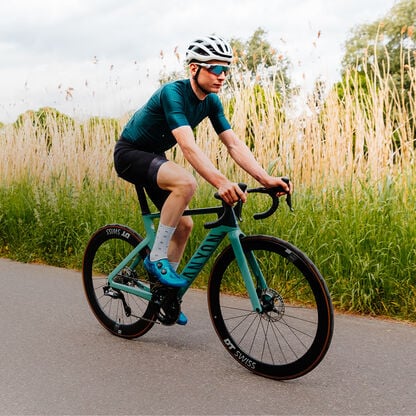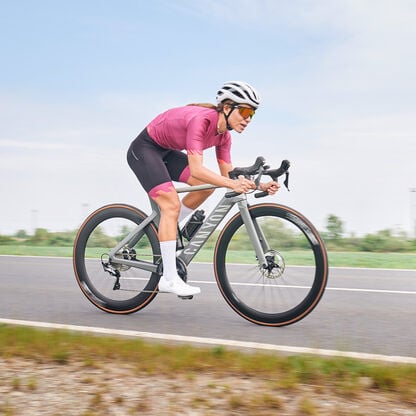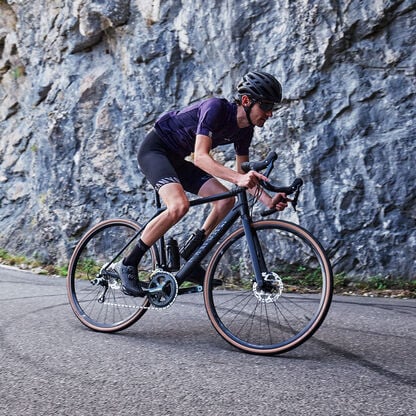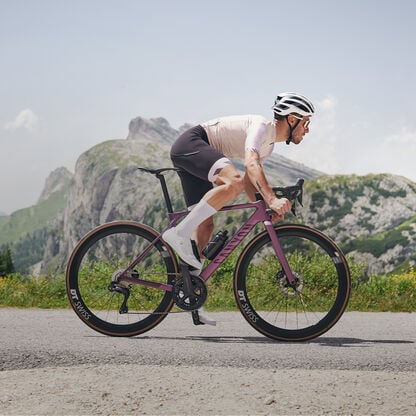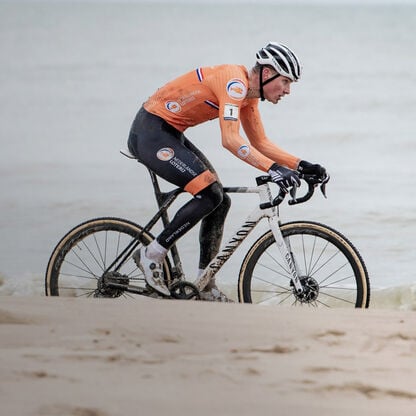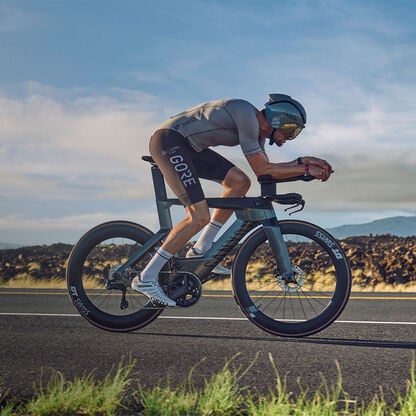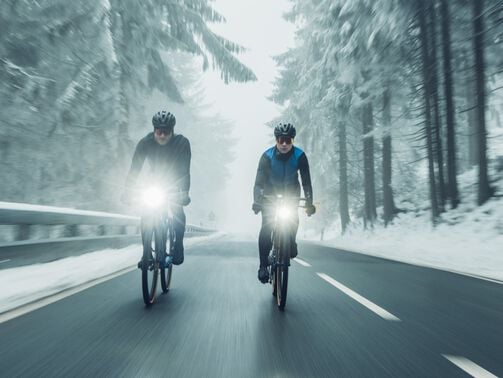Guide to the Spring Classics 2024
Everything you need to know about the Spring Classics races in 2024.
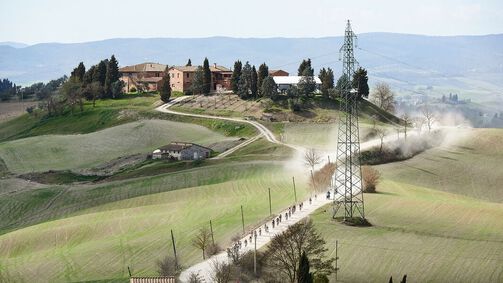
Contents
- What are the classics in cycling?
- When do the Spring Classics begin?
- The Spring Classics races
- The Ardennes
- What are the 5 monuments of cycling?
- 2024 spring classics dates
- The storylines of Spring Classics 2024
- Canyon sponsored cyclists to watch
- Who has won the most monuments?
- How to watch the Spring Classics
What are the classics in cycling?
Held in Northern Europe, the Spring Classics are a set of high profile one-day races that are among the most iconic and celebrated one-day events in the cycling calendar. These races are steeped in history, have shaped legends of professional cycling, and have provided some of the most memorable moments the sport has ever seen.
When do the Spring Classics begin?
The spring classics kick off in late February with the Belgian double header of Omloop Het Nieuwsblad and Kuurne-Brussels-Kuurne. Billed together as ‘Opening Weekend’ these curtain raisers provide an early hit-out for the spring classics specialists who have specifically trained over the winter to peak for the weeks and months ahead.
The Spring Classics races
The term ‘spring classic’ can be broad and is open to interpretation, with different criteria applied to both the exact start of the classics campaign and what merits a race to be labelled as part of the collection. Here we have drawn together the most important races along with the five Monuments of cycling.
Omloop Het Nieuwsblad
Omloop Het Nieuwsblad, formerly known at Omloop Het Volk, tends to contain a number of the Flemish climbs that are typically associated with the Tour of Flanders but unlike mammoth challenge of Flanders, the Omloop course roughly settles at a more manageable 200km of racing.
Best places to watch Omloop Het Nieuwsblad
The final two climbs will be the Muur van Geraardsbergen and Bosberg, while the finish in Ninove is likely to produce an entertaining finale.
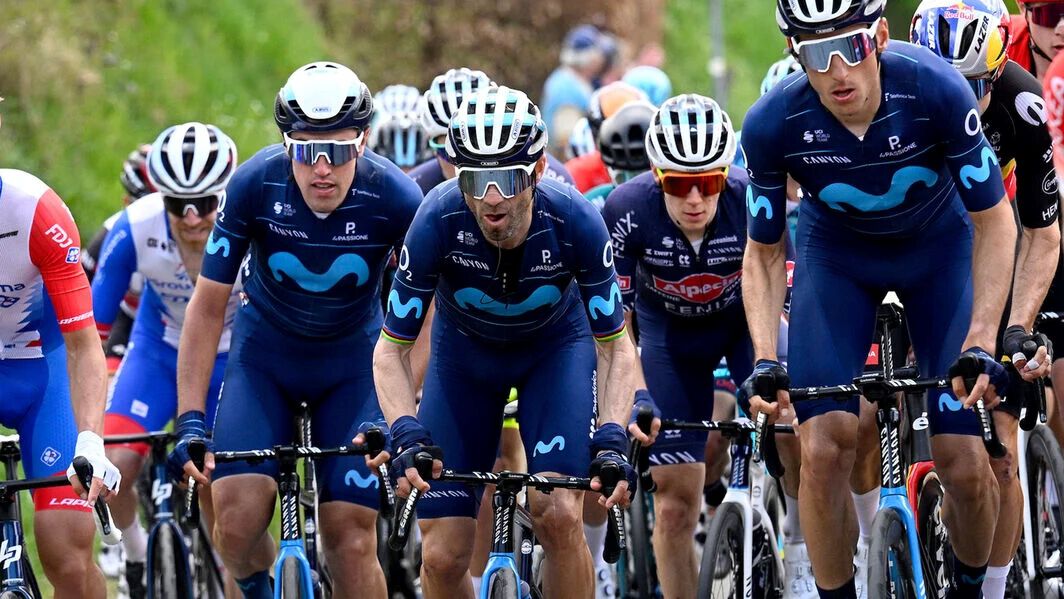
Kuurne-Brussels-Kuurne
Kuurne-Brussels-Kuurne takes place the day after Omloop Het Nieuwsblad and teams often replenish their rosters with Kuurne’s race profile often lending itself to a reduced bunch sprint due to the lack of climbs in the second half of the race. Both races offer an early indication of form ahead of the rest of the spring classics but with so much racing between ‘Opening Weekend’ and the biggest one day races there’s time for riders to improve their condition before the most important spring classics come into view.
Best places to watch Kuurne-Brussels-Kuurne
Kuurne produces a lively race start with beer on tap and passionate Belgian fans in high attendance.
Strade Bianche
After the early forays in Belgium the spring classics head to Italy and a relatively new classic, Strade Bianche. The event, which contains both a women’s and men’s race, held its inaugural edition in 2007, but despite its lack of heritage the race has quickly established itself as a key event within the sport.
The picture postcard setting and the dirt roads of the Tuscan landscape provide one of the most iconic backdrops within the sport, while the roll call of previous winners include Fabian Cancellara, Mathieu van der Poel and Annemiek van Vleuten. Strade Bianche may be the new kid on the classics block but it has already established itself as a must-watch event for all cycling fans.
Best place to watch Strade Bianche
You have to experience riding the dirt roads if you can, but when it comes to attending the race, there’s no place better than the Piazza del Campo in Siena, which is fast becoming one of the most iconic finishes in cycling.
Milan-San Remo
With Strade Bianche in the rearview mirror the attention turns to the first Monument of the season, Milan-San Remo. Also known as La Classicissima, the race is held in late March, tops out at nearly 300 kilometres, and has provided cycling fans with some of the most emphatic and exciting moments since the race’s inception in 1907.
Starting in the Piazza del Duomo in the center of Milan, the race traces along the Ligurian Coast before hitting a series of ascents, before hitting the often race-defining climbs of the Cipressa and Poggio. These two climbs may not be particularly steep, or long, with the Cipressa 5.6km in length and Poggio 3.7km, but with both obstacles coming inside the final 20km they have often acted as the launchpad for famous attacks and daredevil descents. The race is so finely balanced between the climbers, sprinters and one-day specialists that the finale is often too close to call, and while Milan-San Remo is often a slow-burn of a race the thrilling finishes will have you at the edge of your seat.
Best place to watch Milan-San Remo
Milan offers a beautiful location for the race start and there are a number of scenic spots along the coastline from which to watch the race. The finish on the Via Roma is a must on every diehard fan’s bucket list.
Saxo Classic and Gent-Wevelgem
In late March the spring classics return to the heartland of Belgium with E3 Saxo Classic and then Gent-Wevelgem raising the curtain on a series of cobbled races. Gent-Wevelgem, the most famous of the two races, is not quite on the same level as one of cycling’s Monuments but it remains one of the most prestigious one-day races in the calendar with its roots dating back to the 1930s.
Often dubbed as a race suited to the sprinters, the parcours contains three ascents of the lung-busting Kemmelberg, as well often harsh weather and echelons typically splintering the peloton before the finish. Reduced bunch sprints or small breakaways tend to contest for the victory, while since 2012 a women’s race has been added to the calendar, with Kirsten Wild the only rider to win the race on more than one occasion.
Best places to watch E3 Saxo Classic and Gent-Wevelgem
Both races run entirely different and varied routes. When it comes to E3, the start in Harelbeke is always stacked with energy and atmosphere, while there are plenty of climbs along the route that offer the chance to see the race at full throttle. For Gent-Wevelgem, the start in Ypres is a special moment, and there’s a huge amount of history and culture on offer. The Kemmelberg is the obvious mid-point in the race from which to watch the action, with the race organisers providing tickets and packages to fans.
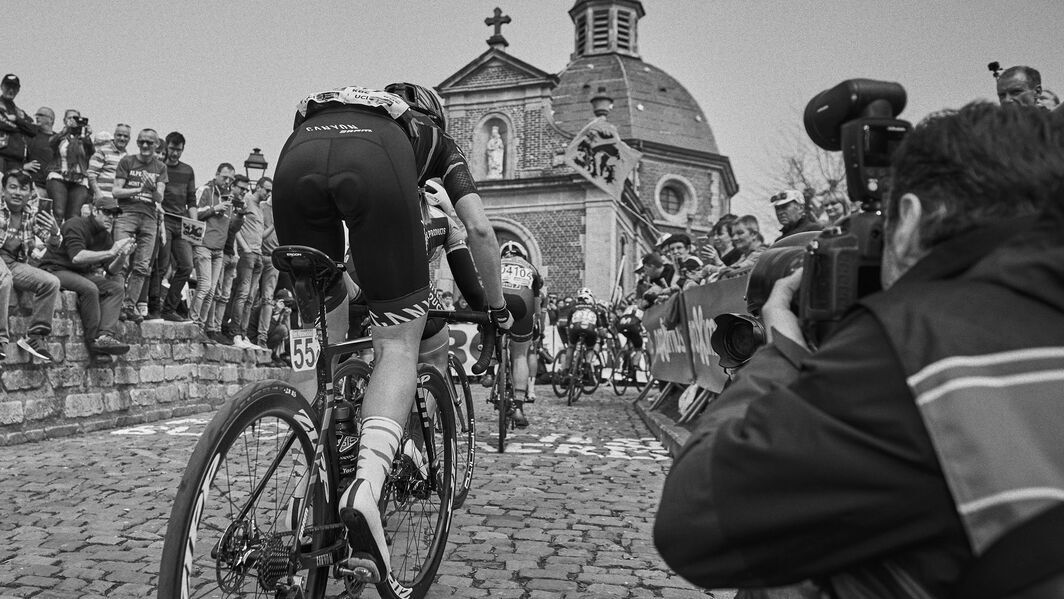
Tour of Flanders
A week after Gent-Wevelgem the cycling world turns its attention towards the Tour of Flanders, (Ronde van Vlaanderen) and Belgium’s most important and illustrious one-day race on the sporting calendar. The men’s race dates all the way back to 1913 and is the second Monument of the season, while the women’s event was established in 2004. The routes for both races have been modified over the years with starts and finishes both being switched out on several occasions. The early editions of the men’s race began and finished in Ghent but over time the route has evolved and the latest incarnation of the men’s events sees the peloton roll out in Antwerp and finish in the town of Oudenaarde.
The 2023 season will see the men’s race take place for the 106th time, with the climbs of the Oude Kwaremont and Paterberg once more taking centre stage. The Kwaremont will be tackled three times in total, while the punchier Paterberg will be climbed twice. With around 13 km between the final ascent of the Paterberg and the finish, the last two climbs should act as the launchpad for the winning move. However, there are so many climbs within the race, and so many decisive factors, that the outcome of the Tour of Flanders - in both the men’s and women’s race - could be decided at any point.
It is without doubt the most tactically difficult race to win, with brains just as important as brawn over the 270-plus kilometers of racing. In 2022 eventual winner Mathieu van der Poel used all of his tactical nous to outfox double Tour de France winner Tadej Pogacar, allowing the Slovenian to do most of the work inside the final 15km before unleashing an unstoppable sprint just as the pair were about to be swamped at the line.
Best place to watch the Tour of Flanders
From the start in the centre of Bruges, to the iconic climbs, and the finish in Oudenaarde, the Tour of Flanders has no shortage of places to check-off on your list. Luckily the race organisers provide tickets for several key vantage points, including the key climbs, while the start in the centre of Bruges is one of the best cycling atmospheres you’ll ever experience with thousands of fans, a full-stage presentation of the riders.
Paris-Roubaix
The final classic and Monument of the cobbled campaign comes in the form of Paris-Roubaix, arguably the most famous one-day race in the cycling world. Dating back to 1896, the race is held in northern France, and has earned the nickname of ‘The Hell of the North’ due to its arduous nature and the back-breaking sectors of pavè that litter the race route. Originally created by textile manufactures hailing from Roubaix, the race is steeped in history and has provided some of the most legendary moments in cycling’s past, from the first finish on the famous Roubaix velodrome in the 1940s, Dirk Demol’s all-day break in 1988, Mapei’s 1-2-3 domination from 1996, to Tom Boonen equalling Roger De Vlaeminck’s record of four wins back in 2012.
What elevates Paris-Roubaix to Monument and effectively legendary status, however, are the cobbles. The Trouée d'Arenberg, Mons-en-Pévèle, and Carrefour de l'Arbre are some of the most feared and celebrated sectors of pavè in cycling and have provided some of the most electrifying racing of all time. Whether it’s a wet or dry Paris-Roubaix, every edition of the race provides blockbuster entertainment.
In 2021 a women’s version of the race was finally added to the race calendar by organisers ASO. Though the race has only had a short lived history it already has all the hallmarks of becoming one of the most respected and treasured events in the calendar.
Best place to watch Paris-Roubaix
The start in Compiègne is always special, and the teams’ presentation at the same place the day before is always a worthwhile experience too. The route speaks for itself and it’s entirely possible to try and see the race at several points, including the Carrefour de l’Arbre, and the Arenberg Forest if you plan ahead. Just remember that unlike most of the races on this list, the women’s and men’s Paris-Roubaix races take place on different days. Of course, the velodrome finish can’t be ignored, with tickets available in advance.
The Ardennes
After the conclusion of the cobbled classics in Belgium and France the cycling caravan heads to the Ardennes for the culmination of the Spring Classics. The Ardennes are effectively made up of three races:
- Amstel Gold Race in the Netherlands
- La Flèche Wallonne in Belgium
- Liège-Bastogne-Liège in Belgium
All three events have men’s and women’s races, respectively, with Amstel - the youngest of the trio - kicking off proceedings a week after Paris-Roubaix. The Dutch race is synonymous with the Cauberg climb but in fact has 30 short bergs throughout the men’s route. The finish has been modified several times over the last couple of decades but the Cauberg remains the final ascent before the finish and often sparks the decisive attacks. In 2019 van der Poel took his first classics win at Amstel Gold Race when he helped reel in a last-minute three-man break before the line before winning a breathtaking sprint to the line.
While Amstel Gold Race is associated with Cauberg there is no doubting the importance of the Mur de Huy climb with La Fleche Wallonne. The ‘Walloon Arrow’, as it’s known in English, finishes atop the brutally tough climb with pitches of 26 per cent almost always determining the outcome of both the men’s and women’s races. Race organisers ASO have modified the finish several times over the last few years in a bid to provide riders with new terrain on which to attack and stretch the race but only once in the last few decades has the race not seen the winning move form on the final climb.
Recently retired Alejandro Valverde - who raced on both the Ultimate and Aeroad holds the record for the most wins with five victories - four of which were earned on a Canyon - while the women’s race, which was founded in 1998, has been dominated by two riders in particular with Anna van der Breggen and Marianne Vos winning seven and five titles, respectively.
The final spring classic and the only Ardennes race to hold Monument status is Liège-Bastogne-Liège. Also known as the La Doyenne or ‘The Old Lady’, the race dates all the way back to 1892, with the women’s race added to the calendar as recently as 2017. It’s the oldest Monument on the calendar, and like the Tour of Flanders and Paris-Roubaix, is considered one of the hardest one-day races in the world.
Just like the Tour of Flanders, the race is punctuated with a series of short but brutally tough climbs, and while the route has been modified at several points over the years, the most iconic ascents of the Côte de La Redoute, Côte de la Roche-aux-Faucons and Côte de Saint-Nicolas has been remained intact and tantamount to the race.
Eddy Merckx holds the record for the most Liège wins with five in total, while Italian legend Moreno Argentin and Alejandro Valverde are both tied on four victories apiece. Only two riders have ever won all three Ardennes races in the same year, the late Davide Rebellin in 2004 and Philippe Gilbert in 2011.
The women’s race is roughly half the distance but also contains a number of the key climbs before the finish in Liège. The 2022 defending champion is Movistar’s Annemiek van Vleuten, who won her second title aboard a Canyon Aeroad.
Places to watch the Ardennes races
Amstel Gold Race: The best locations are the start in Maastricht, the Cauberg, and the finish in Valkenburg.
La Fleche Wallonne: The best place to watch is from the finish on the Mur de Huy.
Liège-Bastogne-Liège: La Redoute and Saint Nicolas provide great vantage points and often major action in the race.
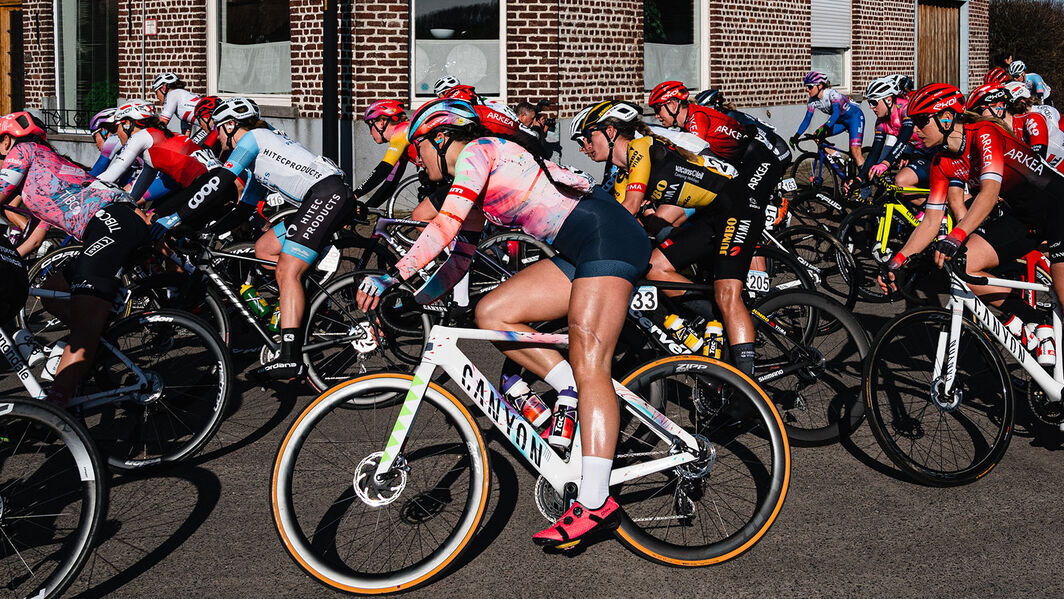
What are the 5 monuments of cycling?
While the spring classics form part of the very fabric of the professional sport there are five races that are given heightened status and known as the Monuments of the sport:
- Milan-San Remo
- Tour of Flanders
- Paris-Roubaix
- Liegè-Bastogne-Liegè
- Il Lombardia
Races such as Gent-Wevelgem, Omloop Het Nieuwsblad, and to a certain extent, Strade Bianche are effectively known as semi-classics and sit one tier below the Monuments.
2024 spring classics dates
| February 24 | Omloop Het Nieuwsblad Women |
|---|---|
| February 24 | Omloop Het Nieuwsblad Men |
| February 25 | Omloop van het Hageland |
| February 25 | Kuurne-Brussel-Kuurne |
| February 27 | Le Samyn Women |
| February 27 | Le Samyn Men |
| March 2 | Strade Bianche Women |
| March 2 | Strade Bianche Men |
| March 9 | Ronde van Drenthe |
| March 13 | Nokere Koerse Women |
| March 13 | Nokere Koerse Men |
| March 13 | Milano - Torino |
| March 14 | Grand Prix de Denain - Porte du Hainaut |
| March 16 | Milan-San Remo |
| March 17 | Trofeo Alfredo Binda - Comune di Cittiglio |
| March 20 | Classic Brugge-De Panne Men |
| March 21 | Classic Brugge-De Panne Women |
| March 22 | E3 Saxo Bank Classic |
| March 24 | Gent-Wevelgem Men |
| March 24 | Gent-Wevelgem Women |
| March 27 | Dwars door Vlaanderen Women |
| March 27 | Dwars door Vlaanderen Men |
| March 31 | Tour of Flanders Women |
| March 31 | Tour of Flanders Men |
| April 3 | Scheldeprijs Women |
| April 3 | Scheldeprijs Men |
| April 6 | Paris-Roubaix Women |
| April 7 | Paris-Roubaix Men |
| April 10 | De Brabantse Pijl Women |
| April 10 | De Brabantse Pijl Men |
| April 14 | Amstel Gold Race Women |
| April 14 | Amstel Gold Race Men |
| April 17 | La Flèche Wallonne Women |
| April 17 | La Flèche Wallonne Men |
| April 21 | Liège-Bastogne-Liège Men |
| April 21 | Liège-Bastogne-Liège Femmes Women |
The storylines of Spring Classics 2024
We can expect the 2024 spring classics to deliver top tier racing and moments of greatness that were plentiful in 2023 too.
Last year saw Tour de France winner Tadej Pogačar solidify his place in the classics, despite crashing out of Liège-Bastogne-Liège. With three major classics wins in Flanders, Amstel Gold Race and La Flèche Wallonne, Pogačar is expected to race in a handful of classics this year including Milan-San Remo in March and Liège-Bastogne-Liège in April.
Jumbo-Visma will be a team that many watch with interest in the 2024 spring classics after their success in 2023. Despite not achieving a Monument in the last racing season, their riders did pick up victories in Omloop Het Nieuwsblad, Dwars door Vlaanderen, E3 Saxo Classic, and at Gent-Wevelgem. Wout van Aert has made it clear that he is keen to expand his trophy cabinet with a Monument win.
Another great storyline from last season was Alpecin-Deceuninck’s sprinter Jasper Philipsen who took second place at Paris-Roubaix, despite not being among the favorites to win. This year he is expected to take part in spring classics including Milan-San Remo, Gent-Wevelgem, and Paris-Roubaix ahead of the Tour de France where he’ll be defending his green jersey.
On the women’s side SD Worx dominated the season by securing victory in 12 out of the 17 one-day races recognized as spring classics or semi-classics. Demi Vollering achieved an extraordinary feat by clinching the Ardennes triple, Strade Bianche, and Dwars door Vlaanderen, while Lotte Kopecky triumphed in the Tour of Flanders, Omloop het Nieuwsblad, and Nokere Koerse. Lorena Wiebes claimed victory in three races – Omloop van het Hageland, Scheldeprijs, and Ronde van Drenthe, while Marlen Reusser exhibited sheer strength with a solo triumph in Gent-Wevelgem.
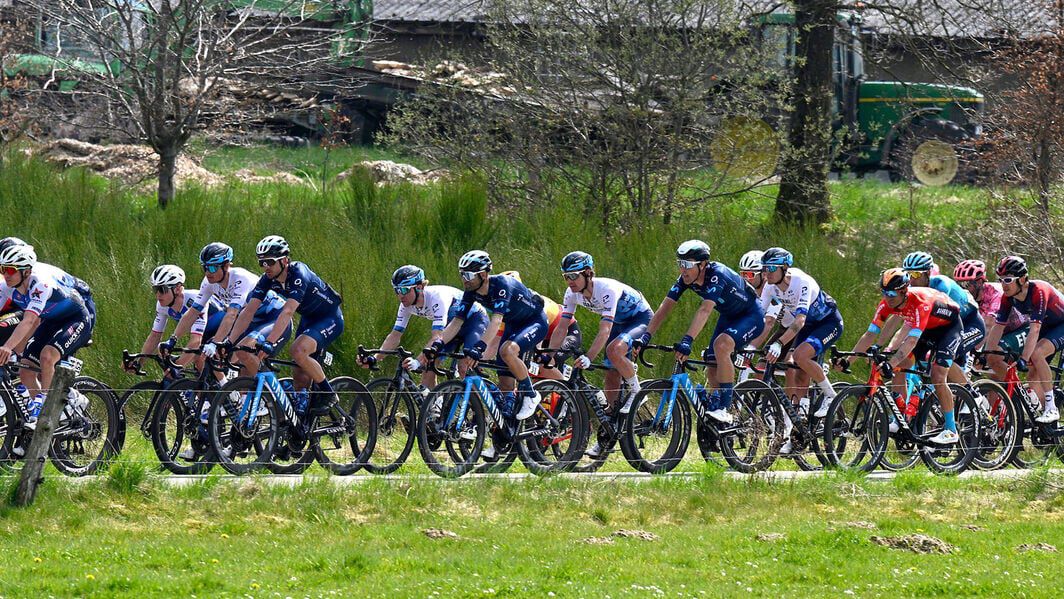
Canyon sponsored cyclists to watch
Jasper Philipsen has already had a mention, but the rest of the Alpecin-Deceuninck team is full of talented riders too. At the top of the list is Mathieu van der Poel, who is expected to start his season at Milan-San Remo to protect his title; it’s where he achieved a third career Monument victory last year.
Over at team Movistar, the classics already have a number of confirmed riders including Norsgaard, Lazkano and Cavagna. Nairo Quintana is returning this season to ride for the team, but has targeted the Giro d’Italia and Vuelta a España instead of the classics.
In the women’s team, there will be no road bike champion Annemiek van Vlueten in 2024 as she retired in September, but Movistar does have Norsgaard, Erić and Gutiérrez already confirmed for the early season classics, with more riders to announce.
Finally, at Canyon//SRAM, the women to watch are Niewiadoma, Cromwell and Paladin. All three riders are due to ride at Omloop Het Nieuwsblad in February. Chabbey joins Niewiadoma and Paladin at the Ardennes in April.
Who has won the most monuments?
Unsurprisingly Eddy Merckx, considered by many as the greatest male cyclist of all time, holds the record for the most monument wins with 19 victories spanning his illustrious career. The Belgian is one of only three male riders to win all five monuments and has the record for the most Milan-San Remo titles (seven) as well as the most Liege-Bastogne-Liege wins (five).
Roger De Vlaeminck competed against Merckx during the late 1960s and early 1970s and has 11 monument wins to his name. Nicknamed ‘Monsieur Paris-Roubaix, the Belgian won the fabled cobbled race four times, and is tied with Tom Boonen for the most wins in the race.
Italian rider Costante Girardengo became one of the most celebrated and successful riders between the two world wars, winning two editions of the Giro d’Italia as well as nine monuments spanning a ten year period between 1918 and 1928. The late Italian joined on nine wins alongside another icon in Fausto Coppi who became one of the greats of the sport during the 1940s and 1950s.
Coppi won almost everything during his glittering career and still holds the record for the most Il Lombardia wins with four victories. The final rider to share nine monument wins is Irish cycling legend Sean Kelly. The former Kas, Flandria and PDM rider was a true all-rounder, capable of winning sprints, stage races and one-day classics thanks to his durability, incredible race tactics and punchy finish. Kelly won four of cycling’s monuments but would miss out on the Tour of Flanders, finishing an agonizing second on three separate occasions.
From the modern day era, Philippe Gilbert, Fabian Cancellara and Boonen are among the most successful riders to win monument titles, while Mathieu van der Poel has two Tour of Flanders wins already in the bank with victories aboard a Canyon in 2020 and 2022 respectively, plus more recent wins at San Remo and Robaix in 2023.
How to watch the Spring Classics
Follow Canyon on Twitter, Facebook and Instagram for alerts on important stories and action from the spring classics.
Most of the 2024 spring classics will be shown on television during the day across Europe and the rest of the world. Eurosport will also be airing races live and in full, and Discovery+ is also expected to live stream the classics for viewers in the UK and Europe.
In the United States and Canada coverage is set to be provided by both Flobikes and Peacock with paid subscriptions. Some of the races are also expected to be broadcast via Warner Bros. Max streaming service via the TNT Sports package, also with a paid subscription.
Discover our Road Bikes
Did this article help?
Thank you for your feedback
